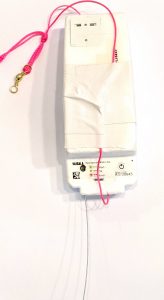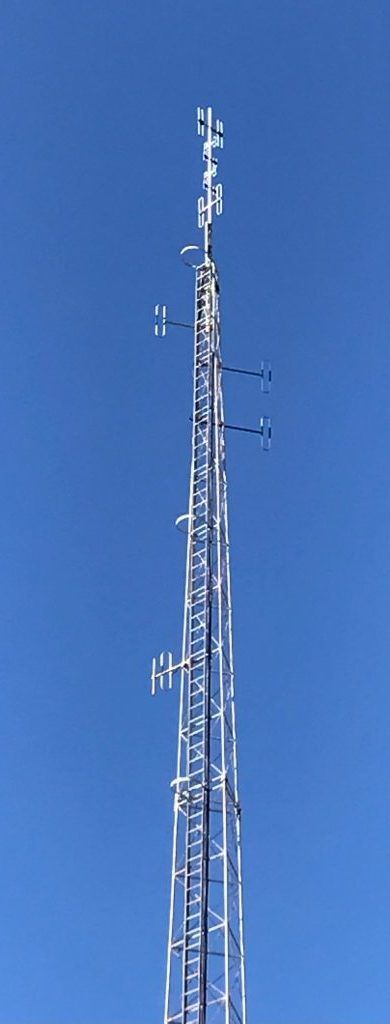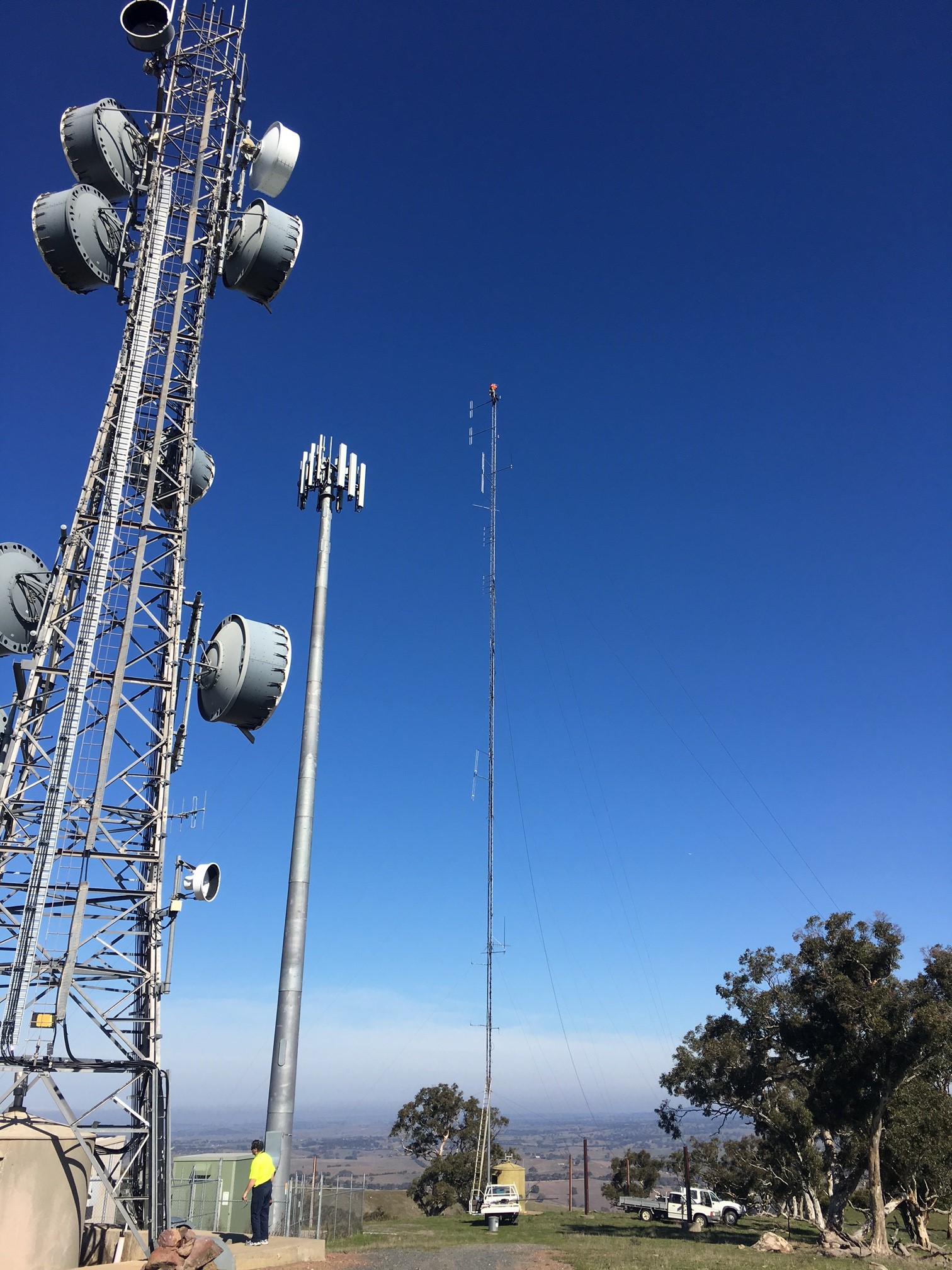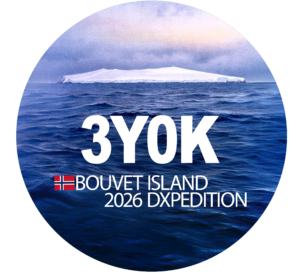AREG is proud to announce that the 2025 Car Boot Sale
will be held on Sunday October 26th
at David Roche Park, Cromwell Rd, KilburnDOORS OPEN 10.00AM (9.30AM for sellers)
Seller Registrations are now open!
Car sites: $10 , Trailer Sites $15

AREG is proud to announce that the 2025 Car Boot Sale
will be held on Sunday October 26th
at David Roche Park, Cromwell Rd, KilburnDOORS OPEN 10.00AM (9.30AM for sellers)
Seller Registrations are now open!
Car sites: $10 , Trailer Sites $15
AREG’s High-Altitude Ballooning sub-group, Project Horus, is planning their next launch for Saturday the 18th of October, with a planned launch time of 10:30 AM ACDST. There will be no backup date for this launch – if the weather is extremely poor, then the launch will be scrubbed.
This will be a small launch, testing some payloads related to the upcoming LaunchBox launch, occurring on Sunday the 2nd of November. This will include a standard Horus Binary tracking payload, and possibly a Wenet imagery payload.
The launch site will be decided in the week before the launch date, and will either be from Mt Barker, or Auburn.
TRACKING LINKS
Details of the frequencies in use on this flight are:
On this flight we encourage new listeners to try out our new web-browser-based decoding software for Horus Binary and Wenet – find out more about this further below!
During the flight, all the payloads can be tracked lived on the SondeHub-Amateur tracker here!
 The primary tracking telemetry will be transmitted on 434.200 MHz using the Horus Binary 4FSK data mode. Amateurs in the Adelaide and Central SA region are also encouraged to get involved with the flight through receiving and uploading flight telemetry from our 70cm band tracking beacons. Every piece of telemetry data is valuable to the flight tracking and recovery teams so if you can help join the distributed receiver network to collect that data you will be making an important contribution to the project!
The primary tracking telemetry will be transmitted on 434.200 MHz using the Horus Binary 4FSK data mode. Amateurs in the Adelaide and Central SA region are also encouraged to get involved with the flight through receiving and uploading flight telemetry from our 70cm band tracking beacons. Every piece of telemetry data is valuable to the flight tracking and recovery teams so if you can help join the distributed receiver network to collect that data you will be making an important contribution to the project!
If you try receiving the telemetry from this flight, you’ll need a SSB-capable 70cm receiver (or a SDR), and the Horus-GUI telemetry decoder software. A brief guide on setting this up is available here: https://github.com/projecthorus/horusdemodlib/wiki/1.1-Horus-GUI-Reception-Guide-(Windows-Linux-OSX)
Note that you will need to use a USB ‘dial’ frequency of 434.199 MHz for the 4FSK signal to be centred in your receiver passband and hence be decodable.
Horus Binary telemetry can now also be received using your web browser, using either a SSB receiver or even a RTLSDR!
Click this link to start up a browser-based receiver:
We’ve also got a guide on how to use this here: https://youtu.be/VrgqF7ly-mU
Imagery on this flight will be transmitted via the Wenet downlink system, which uses 96 kbit/s Frequency-Shift-Keying to send HD snapshots. Reception of the Wenet imagery requires a RTLSDR, and a 70cm antenna with some gain (a 5-element Yagi is usually enough).
We will be using the new ‘Wenet v2’ mode, as trialed on Horus 64B. There is information on updating existing Wenet receive setups available here.
Wenet can now be received on almost any modern computer, and even some newer android devices, using the new WebWenet software! This operates entirely within a web browser. Information on how to get setup to use this is available here: https://www.youtube.com/watch?v=Euo4BGB6wUU
Click this link to start up a browser-based receiver:
Wenet Web Receiver – 443.5 MHz
This payload will be giving the PiCam v3 one last go before we give up and revert back to the PiCam v2.
We encourage new listeners to try out the WebWenet software for decoding signals on this flight – however you can also still receive the signal using the Linux-based decoder, with details on this available here:
https://github.com/projecthorus/wenet/wiki/Wenet-RX-Instructions-(Linux-using-Docker)
During the flight, the live imagery will be available at this link: http://ssdv.habhub.org/
The next meeting of the Amateur Radio Experimenters Group will be held on Friday 19th September 2025. The venue is the Fulham Community Centre, off Phelps Court, Fulham. Doors open at 6.30pm and the meeting starts at 7.30pm.
The presentation this month will be given by Mark, VK5QI and Grant VK5GR who will take everyone through what happens at the National Amateur Radio Foxhunting Championships, held in Mt Gambier over the June long weekend each year.
Tea/Coffee and refreshments will be available. After the presentation a short business meeting will be held.
We hope to see you there (at the ex Reedbeds Community Centre – now Fulham Community Centre).
 Work has been progressing on getting the link equipment installed into AREG’s site at Summertown (VK5RSB) to take over the network hub duties from VK5RAD 70cm, however we are currently a little behind schedule. Fortunately, after negotiations with the site owner at Crafers, the 439.925 70cm repeater has been granted a 1 month service extension before it must be removed from site. The same extension has been also granted to the AHARS for the 147.000 2m repeater.
Work has been progressing on getting the link equipment installed into AREG’s site at Summertown (VK5RSB) to take over the network hub duties from VK5RAD 70cm, however we are currently a little behind schedule. Fortunately, after negotiations with the site owner at Crafers, the 439.925 70cm repeater has been granted a 1 month service extension before it must be removed from site. The same extension has been also granted to the AHARS for the 147.000 2m repeater.
For now, the repeater network connectivity will continue as usual, until we start re-directing links to the new hub mid September. We will let everyone know when each link is going to be relocated and when to start using 147.175 TX / 147.775 RX to access the link network.
UPDATE: Unfortunately we had a launch failure due to high wind gusts at the launch site. No payloads will be flown today. We’ll re-group and look at flying the repeaters again later in the year.
We’re giving it another go! AREG’s High-Altitude Ballooning sub-group, Project Horus, is planning their next launch for Sunday the 14th of September, with a planned launch time of 10 AM ACST. If we have to scrub due to poor weather, the backup launch date will be the 21st of September.
This will be a re-flight of the Horus 63 payloads, which will include our cross-band repeater payload and Wenet imagery payload. This time we hope to achieve a burst altitude of >35km, which will enable repeater coverage between Adelaide and Melbourne! We are looking for stations in Victoria and South-West NSW to listen out for balloon telemetry, and give us a call on the repeater!
The launch site for this flight will be the Mt Barker Summit Sport & Recreation Park oval, located just to the east of Mt Barker, and accessible off Springs Road and Heysen Boulevard. We will be setting up near the main oval Grandstand area. There is ample parking all around the oval.
TRACKING LINKS
Details of the frequencies in use on this flight are:
On this flight we encourage new listeners to try out our new web-browser-based decoding software for Horus Binary and Wenet – find out more about this further below!
During the flight, all the payloads can be tracked lived on the SondeHub-Amateur tracker here!
This will be a re-flight of our cross band voice repeater, which performed very well on Horus 63. This is based around a Yaesu FT-530 handheld transceiver. The balloon repeater should be heard on:
Please note that this repeater is experimental, and may have performance issues or even fail completely during the flight!
To transmit to the balloon at the maximum range of 800km (once the balloon reaches 100,000ft ++) you should only need approximately 10-20W and an 2-4dB gain antenna.
Receiving the balloon at 400km range in a handheld environment should be achievable, but to hear the repeater at the maximum range of 800km you should expect to need a 10dB gain Yagi for a 0.4uV capable receiver and 2dB feeder loss
This setup is much the same as the LEO satellites but without the doppler shift.
PLEASE MAKE SURE YOU CAN HEAR IT BEFORE YOU TRANSMIT!
This repeater will be operated as a controlled net, with the net control callsign VK5ARG – please listen out for net control before calling!
 The primary tracking telemetry will be transmitted on 434.200 MHz using the Horus Binary 4FSK data mode. Amateurs in the Adelaide and Central SA region are also encouraged to get involved with the flight through receiving and uploading flight telemetry from our 70cm band tracking beacons. Every piece of telemetry data is valuable to the flight tracking and recovery teams so if you can help join the distributed receiver network to collect that data you will be making an important contribution to the project!
The primary tracking telemetry will be transmitted on 434.200 MHz using the Horus Binary 4FSK data mode. Amateurs in the Adelaide and Central SA region are also encouraged to get involved with the flight through receiving and uploading flight telemetry from our 70cm band tracking beacons. Every piece of telemetry data is valuable to the flight tracking and recovery teams so if you can help join the distributed receiver network to collect that data you will be making an important contribution to the project!
If you try receiving the telemetry from this flight, you’ll need a SSB-capable 70cm receiver (or a SDR), and the Horus-GUI telemetry decoder software. A brief guide on setting this up is available here: https://github.com/projecthorus/horusdemodlib/wiki/1.1-Horus-GUI-Reception-Guide-(Windows-Linux-OSX)
Note that you will need to use a USB ‘dial’ frequency of 434.199 MHz for the 4FSK signal to be centred in your receiver passband and hence be decodable.
Horus Binary telemetry can now also be received using your web browser, using either a SSB receiver or even a RTLSDR!
Click this link to start up a browser-based receiver:
We’ve also got a guide on how to use this here: https://youtu.be/VrgqF7ly-mU
A backup tracking payload will be transmitting on 434.210 MHz using the Horus Binary 4FSK data mode, and can be received in the same way as the primary tracking payload, with information above. For this payload you will need to use a USB ‘dial’ frequency of 434.209 MHz.
Click this link to start up a browser-based receiver:
Imagery on this flight will be transmitted via the Wenet downlink system, which uses 96 kbit/s Frequency-Shift-Keying to send HD snapshots. Reception of the Wenet imagery requires a RTLSDR, and a 70cm antenna with some gain (a 5-element Yagi is usually enough).
We will be using the new ‘Wenet v2’ mode, as trialed on Horus 64B. There is information on updating existing Wenet receive setups available here.
Wenet can now be received on almost any modern computer, and even some newer android devices, using the new WebWenet software! This operates entirely within a web browser. Information on how to get setup to use this is available here: https://www.youtube.com/watch?v=Euo4BGB6wUU
Click this link to start up a browser-based receiver:
Wenet Web Receiver – 443.5 MHz
This payload will be reverting to a PiCam v2, so we don’t hit the de-focusing issues encountered with the PiCam v3.
We encourage new listeners to try out the WebWenet software for decoding signals on this flight – however you can also still receive the signal using the Linux-based decoder, with details on this available here:
https://github.com/projecthorus/wenet/wiki/Wenet-RX-Instructions-(Linux-using-Docker)
During the flight, the live imagery will be available at this link: http://ssdv.habhub.org/

Many amateurs in central SA today make use of the central state 2m/70cm band repeater network that covers from Victor Harbor to the Riverland, and Adelaide to the Central North. Unfortunately, due to the loss of the central VK5RAD repeater hub site, a major rearrangement of the repeater network needs to be undertaken. The Amateur Radio Experimenters Group has offered to host the 70cm network hub (formerly operating at VK5RAD) at their Summertown repeater site to keep the network operational. However, to establish VK5RSB as the new hub, there will be some disruption to operations as link frequencies are changed and equipment is relocated.
Final hub equipment installation work is planned to take place starting August 23rd. That will include deploying a new repeater control system & hub repeater at the AREG VK5RSB repeater site.
The key change Adelaide amateur radio operators will see is that, rather than accessing the network via the old 439.925 MHz 70cm repeater at VK5RAD, they instead will need to use the recently commissioned 147.175 MHz (+600 kHz) (91.5 Hz CTCSS) repeater at Summertown (VK5RSB).
For those still looking for 70cm band access, the AREG VK5RSA Adelaide CBD repeater, (sponsored by Kern Wi-Fi) on 438.025 MHz (-7 MHz) or the VK5RKW Adelaide NE repeater on 438.050 MHz will continue to be available.
How long will the full migration take?
Once the new central hub is installed, one by one, each of the network links will be migrated. This will result in the network being fragmented (part working on the new backbone, part working on the old one) for 1-2 weeks, while we travel all of the linked sites to make the necessary frequency and control changes. We hope to have all of the network migrated to the new hub no later than the 6th of September.
As you can appreciate, this move will take time. The affected repeaters in the network are VK5RSA, VK5RKW, VK5RAH, VK5RMB, VK5RVH, VK5RBV, VK5RWR, VK5RLD, VK5RLX, VK5RMK, VK5RLH as well as VK5RSB which will be introduced into the system.
We will post updates as each of the links is moved. Meanwhile, thank you for your patience.
The next AREG meeting will be held on Friday the 15th of August at the Fulham Community Centre – Phelps Court, Fulham. This will be the AREG’s Annual General Meeting, which will include the election of the 2025-2026 committee.

Doors open at 7.00pm and the presentation kicks off at 7.30. Everyone is welcome to attend. If you’ve never come along to one of our meetings, we’d love to see you there, all guests are welcome. For our remote members, the meeting will be broadcast via Zoom
After the talks we’ll all be given an opportunity to have an eyeball QSO among ourselves whilst enjoying a tea or coffee and a biscuit.
73, Mark VK5QI
In July of 2025 we tried something we hadn’t tried in a while – doing a balloon launch in Winter. Finding a weekend suitable for a large balloon launch in Winter is pretty tricky – the right balance of ground weather conditions (low wind, no rain) and a flight path that doesn’t end up hundreds of km to the east means that launches often get delayed and delayed – and that’s exactly what happened!
The intention of Horus 64 was to re-fly our cross-band repeater payload up to an altitude of at least 35km, allowing repeater coverage between Adelaide and Melbourne. Unfortunately we were never able to get the repeater payload in the air due to poor weather, but we did still do 2 balloon launches with lighter payloads.
Another objective of the launch was to experiment with, and promote the use of the new web-browser-based decoders for our telemetry transmissions. These decoders were developed by Michaela VK3FUR, and make reception of our Horus Binary tracking telemetry, and our Wenet imagery, much more accessible.
What I’m now calling ‘Horus 64A’ launched on Sunday the 6th of July. It was pretty clear during the preceding week that the repeater launch wasn’t going to be possible, with the flight path prediction landing in inaccessible areas north of Waikerie. The call was made Friday night to scrub the full-size launch and send up a lightweight tracking payload under a small (100g) balloon, to give stations some telemetry to practice reception on.
Weather at the launch site turned out to be ideal, with low winds and clear skies. Unfortunately the flight path predictions were unchanged, so a full launch was still not possible. Mark VK5QI and Will VK5AHV filled the (very small) balloon with a few interested onlookers, and the balloon was released on time at 10AM.
The flight proceeded as expected until about 15km altitude, where we suspect that some of the insulation around the payload gave out, resulting in a sudden drop in temperature and the failure of the tracking payload at just under 17km altitude. No further signals were received. A dashboard showing telemetry from this flight is available at this link.
Thanks to the stations that received telemetry from this flight: BARC-RRR,VK3APJ,VK3APJ-2,VK5AI,VK5AKK,VK5ALG,VK5APR,VK5ARG,VK5CBM,VK5CV,VK5FD,VK5GA,VK5GY,VK5IS,VK5KX-i5,VK5LN,VK5NEX,VK5NTM,VK5QI-9,VK5RK,VK5ST-4,VK5TRM,VK5ZAR,VK5ZBI-1,VK5ZBI-2,VK5ZM,VK5ZMD
Our second try at the repeater launch was for the following weekend. Again, as we got closer to the launch day the weather forecasts were looking pretty poor. This time we had a combination of very high wind speeds at the launch site, as well as a flight path that would take the payloads east into Victoria, landing somewhere inside the Murray Sunset National Park.
When it became clear that a full-size launch was once again not going to be possible, the plan pivoted to another smaller launch – this time with a tracking payload *and* an imagery payload, accepting that these payloads might not be recovered on the launch day.
Michaela VK3FUR was able to quickly build up a Wenet imagery payload to fly on this launch. This payload also included software which alternated between the ‘classic’ Wenet modulation (in use since ~2018), and a new ‘Wenet v2’ mode, which is more spectrally efficient. We also added on a PiCam v3 as one last test to see if we could get the auto-focus behaving correctly. Michaela drove over from Melbourne along with Geordie VK3CLR and Alex VK3SNP the day before the launch! You can read her writeup on the payload and flight here.
On arrival at the launch site, it was immediately obvious that a full-size launch would have been a very bad idea – it was windy! After finding a sheltered spot to fill, it was decided to try flying a 600g Hwoyee balloon to give the imagery payload a bit more time in the area. Filling went fairly quickly, with many hands available to help out with ‘balloon management’.
Launching was a bit more challenging – with wind gusts picking up right as we were preparing for launch, and the balloon almost hitting the ground! The entire launch was captured by Autumn VK5CLD:
With the flight heading to the east at over 200 kph we decided it wasn’t worth chasing, and instead headed up to a lookout near Palmer to attempt to track the payloads for as long as possible.
Peter VK5KX and Matt VK5ZM were already on-site, with Pete’s tracking antenna setup, and Matt’s ‘pelican case portable’ receiver. After the launch crew arrived, we had some fun trying out different reception setups, including receiving Wenet imagery using a mobile phone, RTLSDR, and a 18-element yagi! (Worked great, but very difficult to point accurately!). Michaela demonstrated a cheap Wenet reception setup which she describes in her blog post.
With a 600g balloon, we had expected a burst altitude around 30km. Unfortunately the balloon failed at just over 20km altitude, and we suspect it might have been due to a collision with one of the payloads!
The payloads descended under parachute to a landing approximately 13km north-east of Underbool, Victoria. The last telemetry packet was received by VK5TRM at an altitude of just over 1km, from 130km away. The last imagery packets were received at an altitude around 2.2km by VK5KX’s portable setup, at a range of 250km.
The next day, Michaela & company visited the predicted landing area (a bit of a detour, while heading home to Melbourne) and were able to spot the payloads. A short walk across a paddock, and the payloads were easily recovered.
Michaela was able to create a time-lapse showing the images captured by the payload in the last few hours after landing, before the battery failed:
Unfortunately we hit the PiCam v3 focus issues again – this time we think it was caused by the autofocus algorithms not handling the movement of the payloads during flight. Essentially all of the images taken after launch were out of focus. On our next launch we will most likely switch back to the PiCam v2 or PiCam HQ.
The ‘Wenet v2’ modulation performed well, and we’ll be switching to this on all future launches. Further information on how to receive this will be provided before the next launch.
A selection of images from the flight as shown below:
The following stations received the ‘ITSWINDY’ Horus Binary Telemetry during this flight: AAA-RX,Angaston-RX,BARC-RRR,VK3APJ,VK3BKQ,VK3FUR,VK3TNU,VK5AKK,VK5ALG,VK5ARG,VK5BRL,VK5CBM,VK5CLD-9,VK5FD,VK5GA,VK5GY,VK5HS,VK5HW,VK5IS,VK5KAW,VK5KX-i5,VK5LN,VK5NE,VK5NEX,VK5PJ,VK5QI-9,VK5RK,VK5ST-4,VK5WE,VK5ZAR,VK5ZBI,VK5ZBI-2,VK5ZM,VK5ZMD,VK5ZQV,vk5cv,vk5trm
The furthest reception was from VK3BKQ near Geelong, at a distance of 495 km!
You can find a breakdown of packets received on the flight dashboard, available at this link.
The following stations received imagery packets from the ‘Wenet Classic’ transmitter (VK3FUR):
The following stations received imagery packets from the ‘Wenet v2’ transmitter (VK4XSS):
VK3SNP: 35751 packets (8.73 MB)
VK3SNP-M: 619 packets (0.15 MB)
VK5QI-PHONE : 1252 packets (0.31 MB)
Vk3fur-mobile: 6984 packets (1.71 MB)
VK5ZM: 15631 packets (3.82 MB)
vk3clr: 600 packets (0.15 MB)
VK3FUR: 47417 packets (11.58 MB)
VK5KX-9-v2: 22843 packets (5.58 MB)
Thanks to everyone that received telemetry and imagery on this flight, and in particular thanks to those stations that gave WebHorus and WebWenet a go!
We still want to try and get the cross-band repeater in the air. This will hopefully happen in late August or early September – information will be posted here once a date is finalised.
We can also announce that we will be performing high-altitude balloon launches for Fleet Space later in the year, as part of their LaunchBox STEM program. The first of these launches is expected to occur in mid-October.